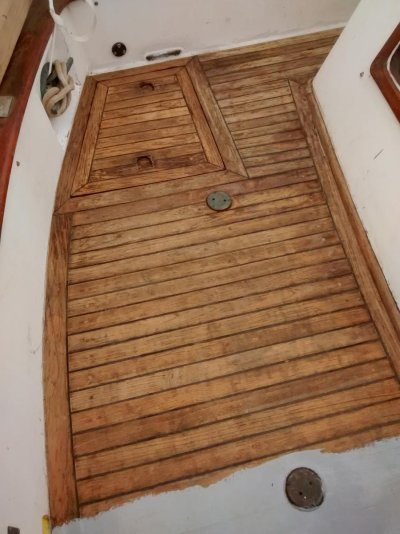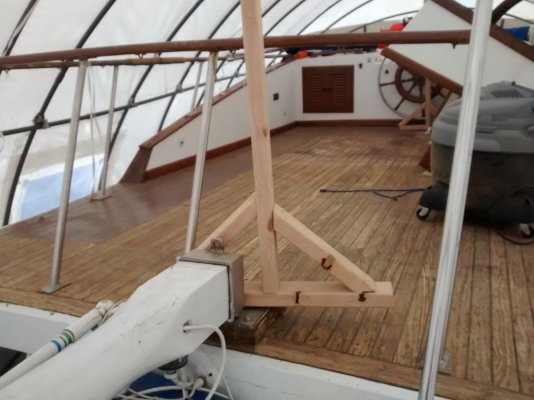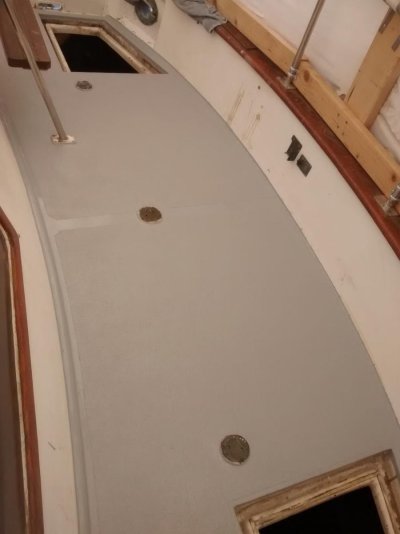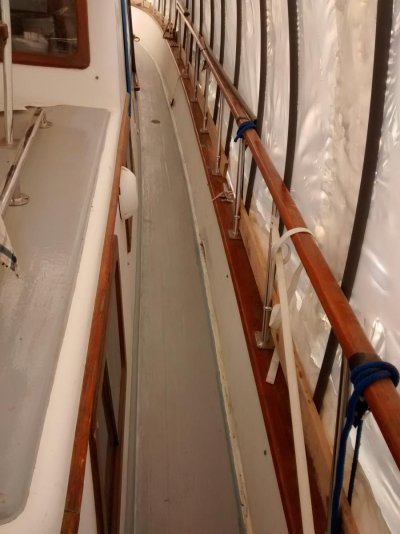catan man
Member
I just purchased a 1986 Oceania 42 and it has a reasonably intact but tired teak deck. It would seem the previous owner(s) used a pressure washer to clean it. The deck is between 1/4" - 3/8" thick with the softer wood portion of the wood grain noticeably recessed. Some of the bungs (~5%) are missing and there are some of gaps in the caulking and wood. At this time fortunately the sub deck is sound with moisture readings revealing acceptable levels.
I am not particularly interested in having to be ever vigilant in maintaining this somewhat fragile deck situation.
I am interested to know if anyone has taken a similar situation as mine and prepared/sealed the teak deck to receive a synthetic teak deck overlay. I do not see any upside in disturbing the currently intact, albeit fragile teak deck. That said, I am a newbie to owning a boat... is my thinking reasonable? Happy to learn of your opinions, suggestions, recommendations. Thanks.
I am not particularly interested in having to be ever vigilant in maintaining this somewhat fragile deck situation.
I am interested to know if anyone has taken a similar situation as mine and prepared/sealed the teak deck to receive a synthetic teak deck overlay. I do not see any upside in disturbing the currently intact, albeit fragile teak deck. That said, I am a newbie to owning a boat... is my thinking reasonable? Happy to learn of your opinions, suggestions, recommendations. Thanks.





